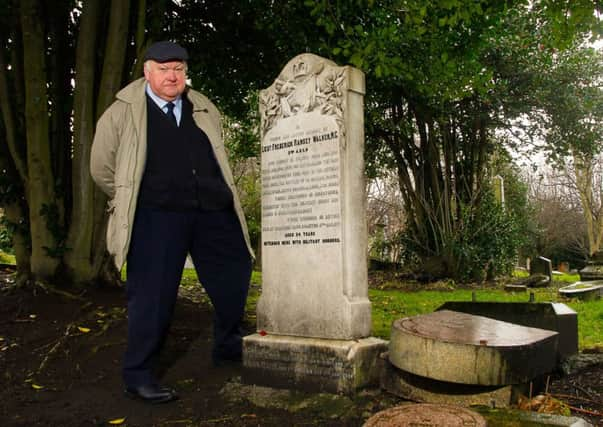War hero's grave restored by mystery benefactor


But when an amateur military historian who planned to start fundraising to restore the headstone of Lieutenant Frederick Ramsey Walker of the 2nd battalion of the Argyll and Sutherland Highlanders in Dalry cemetery, Edinburgh, revisited the grave, he discovered it had been fully restored -– but no-one could tell him who was responsible.
Now, with the 100th anniversary of Lt Walker’s death today, Edward Flint, a retired civil servant from Edinburgh, wants to uncover the identity of the benefactor who restored the headstone to its former glory.
Advertisement
Hide AdAdvertisement
Hide AdLt Walker who was born in Tipperary in Ireland and joined the army as a boy soldier when he was 13 years old. He died suddenly at Dreghorn camp, in Colinton, Edinburgh, on 6 January, 1917, aged 34.
When he died, The Evening Despatch of 10 January, 1917 reported that “a large number of people accompanied the cortege from camp to the cemetery, preceeded by pipe and brass bands of his battalion and followed by six hundred men from different battalions. There was a graveside service, and shots were fired.”
Mr Flint said he first spotted the headstone five years ago when researching the background of thousands of men from the Gorgie and Dalry parts of the city who had been killed in the Great War.
“Frederick Walkers’s stone was quite unique. It was ornate and on the inscription it said he had been awarded the Military Cross and Legion De Honneur. It listed all his battles – the retreat from Mons, and battles of Le Cateau, Marne, Aisne, Ypres, Neuve Chapelle, Loos and the Somme. He had also been wounded twice in action and mentioned three times in despatches.
“The Legion of Honour was said to have been presented to him personally by General Joffre [commander-in-chief of the French forces on the Western Front]. But the headstone had fallen and was fragmented, it was just rubble.
“I had no prior knowledge of the man or how it was he had been laid in that ground, but felt that he deserved better than to have his grave fall to neglect.
“My aim now is to find out who restored the stone and say ‘well done’ to them.”